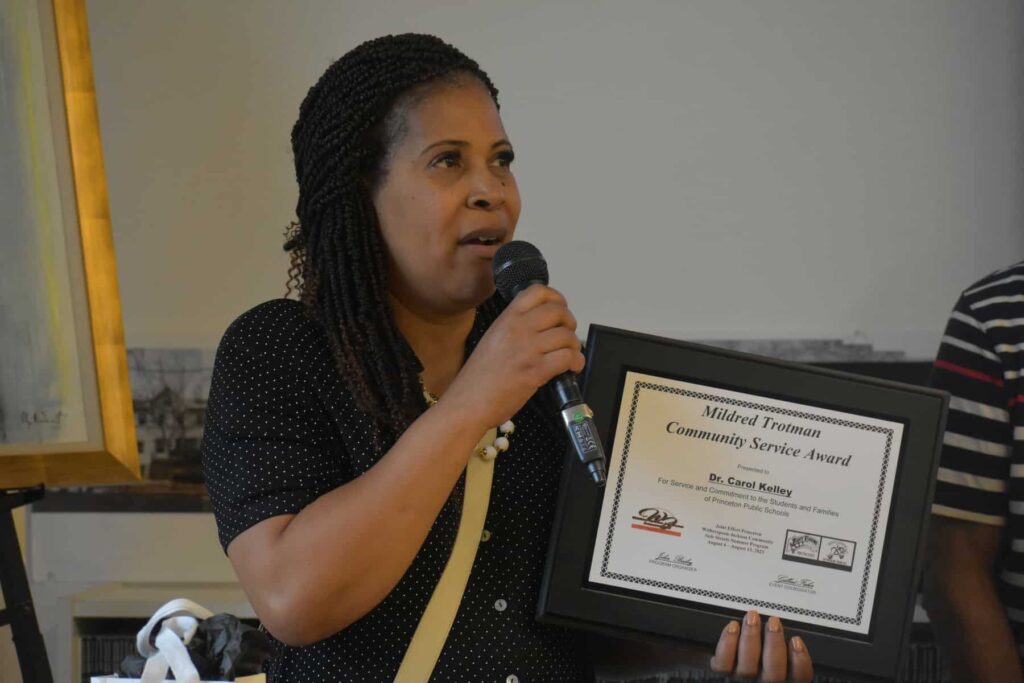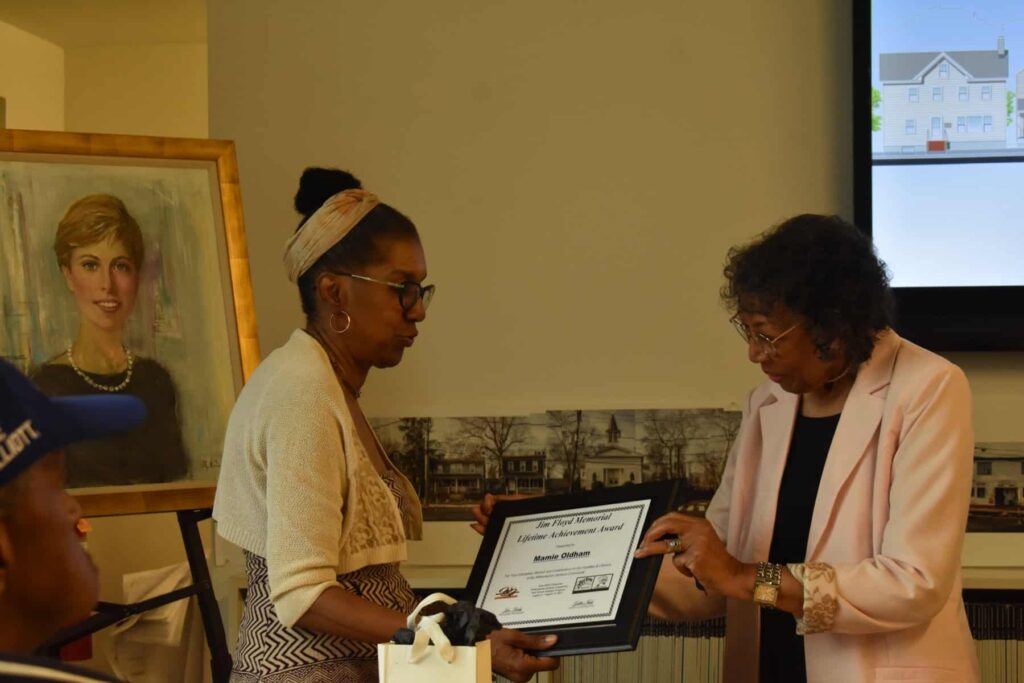Joint Effort Witherspoon-Jackson Community Princeton Safe Streets celebrates and remembers the town’s Black community
Celebrating and remembering the history of Princeton’s Black community has been well underway with the Joint Effort Witherspoon-Jackson Community Princeton Safe Streets 10-day celebration.
Key figures in the history of the Witherspoon-Jackson Community and Princeton are recognized and honored during the annual celebration.
“If you look at the week-long schedule you will see that every day is named after some African American home-grown personality and celebrity who grew up in this town,” said John Bailey, Joint Effort Safe Streets founder and event coordinator.
“We thought this year it was important to acknowledge the folks each day, so that we begin to not only celebrate our history but remember our history.”
The days include Betsy Stockton Day, Howard Waxwood Day, Albert Hinds Day, Jim Floyd and Romus Broadway Day, Paul Robeson Day and Pete Young Sr. Day.
The theme for 2023 Joint Effort Safe Streets activities is “Reflections on Princeton’s Black Community” and “Growing up in the Witherspoon-Jackson Neighborhood”.
“In trying to figure out who we sort of dedicated this sort of week-long activity to I thought this time around let us include all of our ancestors, because the last time we met last year we lost a lot of folks in this community,” Bailey said. “Black, white, brown and men and women.”
The Witherspoon Jackson Community Day program inside Studio Hillier on Witherspoon Street on Aug. 4, kicked off the activities and discussions that have been taking place over this week.
Bailey noted how one of the major issues going on in the country outside of climate change is the education of young people before he honored Carol Kelley, superintendent of Princeton Public Schools, with the Mildred Trotman Community Service Award.

“There is a need for us to do more, there is a need for us to be more, and there is a definite need for us to consider how we support our next honoree, who is the superintendent of schools for Princeton Public Schools,” he said.
“We are recognizing [Kelley] with the Mildred Trotman Community Service Award for service and commitment to Princeton students and Princeton families.”
Kelley called receiving the award an “honor.” She highlighted the approval of a school district strategic plan, which includes the continued expansion of preschool with two new classes of preschool start this fall.
“We will continue to expand early detection of students that may need intervention, so we will be introducing in the fall an intervention called ‘Early Bird,’ which is research based out of Harvard University for students who may have dyslexia,” Kelley said.
“We will continue to expand our enrichment opportunities for our students. We brought in an enrichment teacher last year, so she will be starting in the fall for all of our students.”
The theme for the upcoming school year in Princeton is “Belonging and Community.”
“Thank you, Mr. Bailey, from the bottom of my heart for this honor I appreciate it,” she said, adding she appreciates the district’s staff.

Mamie Oldham, a well-known matriarch in the Witherspoon Jackson community and the late Barbara Hillier, architect and co-founder of studio Hillier, were presented with the Jim Floyd Memorial Lifetime Achievement Award. Hillier, who passed away in 2022, was presented with the award posthumously.
“Barbara Hillier has done unbelievable work for the Black community as an architect, humanitarian, and as a woman who cared about those she lived around, lived with and worked with,” Bailey said.
Hillier’s husband Bob shared his love for Barbara noting they also had a great partnership professionally as architects.
Wendy Oldham, Mamie Oldham’s daughter, said on her behalf she wanted to say “thank you to everyone, especially the Jackson-Witherspoon community and Clay Street.”
“This is a great community and the work you are doing to keep the memory and vibrancy of this community is commendable and needed,” she said. “Because in 10 years we want people to know that we were here.”

And to remember “where they came from and who was here,” Councilman Leighton Newlin and local historian Shirley Satterfield, who also is a co-founder of the Witherspoon-Jackson Cultural and Historical Society, spoke of the “ancestors and angels” of the community.
“I grew up on old Clay Street, the Clay Street that was there until 1952,” Satterfield recalled. “When Clay Street left, we moved to Birch Avenue, and I did not know at that time those houses came from Baker Street. Baker Street is now Palmer Square. Those houses we lived in were moved down by Mr. Palmer and that was our first urban renewal.”
In 1954, when they built the Hageman Homes on Clay Street, Satterfield’s family moved back to Clay Street.
“I moved across the street with my mother, and we lived above Mrs. Tadlock,” Satterfield relayed. “Mrs. Tadlock, she took care of five generations of children. We used to doo wop on those steps, and we would be singing [when] Mrs. Tadlock would come out with hot water and throw it on the porch and tell us it is time to go home.
“So, we had people in the neighborhood who took care of us all the time.”
Satterfield held up a poster with more than 200 names of African American families in Princeton since 1789.
“Every time I give a presentation, which is often, I always show this to let people know that we were here, and we still are here and that we have to stay here,” she said.
Bailey explained that 50 years from now if Black families from the Witherspoon-Jackson community are not here, they need to make sure the Princeton community realizes that African Americans in the neighborhood community were here at one time.
“There is always talk about [whether or not] Black generational wealth is always on the minds of African Americans, especially when you go through gentrification,” Newlin said. “It is not lost on me how rare it is and how fortunate I am to be an African American homeowner in the town of Princeton.”
Newlin highlighted his grandparents’ “brains and will power” to buy a home at 230 Birch Ave. many years ago.
“The reason that is rare here in Princeton is that because there are very few African American homeowners left in this town,” he said. “There are many African American people in this town and people of color in this town, but I’m talking about homeowners, wealth, and ancestry and why that is important.
“We are here because of the history and the importance of the history that we share and the numbers that are dwindling.”

